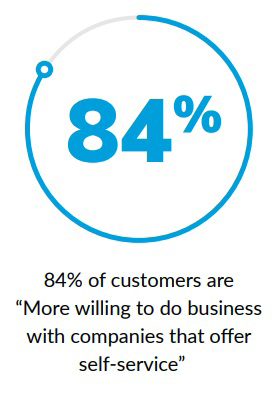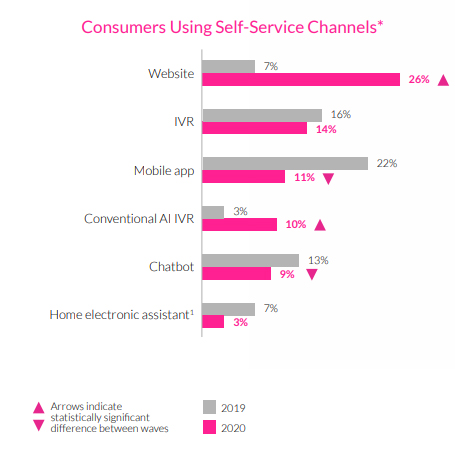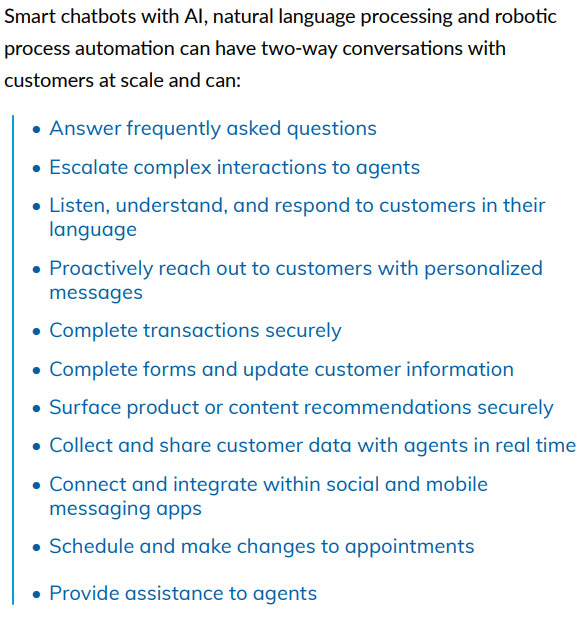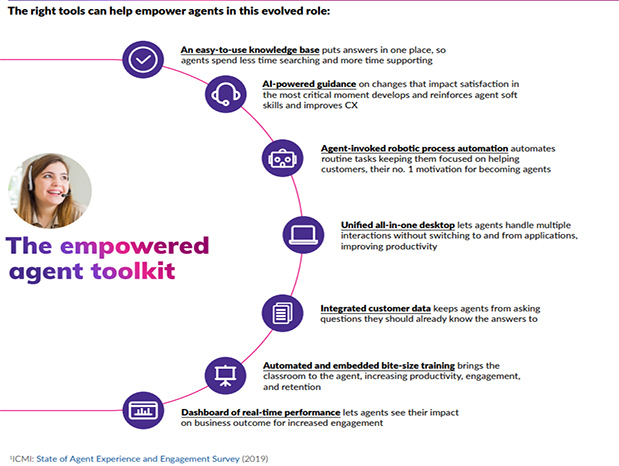In this age of cancel culture, businesses are caught in the crosshairs of consumers who are ready to pull the trigger if they don't approve of what brands do. Anything from political leanings to choices in spokespeople can trigger a social media firestorm and widespread boycotts against companies. No one is immune, and online opinions travel fast.
The indignation caused by a bad experience is common and easily spread these days, which makes customer loyalty a tenuous thing to maintain. It doesn't take much for some customers to leave a brand—one impression that doesn't meet customer expectations is all it takes to increase churn.
Personally, I've never left a brand because I didn't like their politics or spokesperson, but I have stopped doing business with a company because of bad customer service. Call me crazy, but it’s hard to leave an interaction satisfied when an agent keeps asking for my name; or when I hear them laughing at a TikTok video playing in the background.
I'm not alone in my reaction to an inferior customer service experience. Microsoft found that 61% of customers stopped doing business with a brand due to poor service.[i]
When customers engage with a contact center, the last thing they want is to fall into the traps of a disjointed journey that doesn’t meet their expectations. Click here to read more about the top 5 pitfalls of CX and how to overcome them.
If so many customers are bound to companies by such a fine thread, what can businesses do to strengthen that bond and increase customer retention? What is the most effective way to improve customer loyalty? How can you best tie customers to your brand and ensure they don’t wander off to the competition?
We’ll give you a hint: Brands would do well to focus on customer experience, and the contact center is a great place to start. This article discusses three areas contact centers can focus on to increase customer loyalty and keep the enterprise flying under the radar of the cancel culture mob.
Focus Area 1: Instant gratification with improved self-service
A surprising fact is that most customers prefer to take matters into their own hands, find answers to their own questions, and resolve their own issues. In fact, according to an article published by Harvard Business Review, 81% of people try self-service before reaching out to customer service for help.[ii]
People with strong DIY inclinations think handling their own issues is the best path to instant gratification. Speed is a high priority for today’s consumers. Salesforce found that “Eighty-three percent of customers now expect immediate engagement when they contact a company.”[iii]
Additionally, people expect businesses to be available to them around the clock. Raj Putnam of ScienceLogic sums it up well in a recent CMS Wire article, "Customer service should be an around-the-clock effort because your customers are operating in that exact way. Anything that brands provide to customers today, especially from a digital service, is 24/7/365."[iv]
These expectations mean that it is up to businesses to make sure they’re always available to customers. Implementing effective self-service solutions is a great way to achieve this because it enables DIY-ers to use search to successfully resolve issues and answer questions on their own. Contact centers should take the following actions to ensure high self-service completion rates.
Optimize website and customer content to meet customers at their moment of need
Our 2020 CX Benchmark study revealed that business websites are the most used self-service channel and receive the highest satisfaction scores among DIY solutions.[v] This information confirms the need for optimized web content.
Something to consider including within every website are FAQ pages. To ensure they actually contain the most "frequently" asked questions, an effective strategy organizations can implement is to analyze contact center interactions and web queries to identify common customer questions to include.
Additionally, a searchable knowledge base can quickly provide customers with the answers they're looking for. However, this shouldn’t be the type of knowledge base that returns 200 irrelevant answers. The best knowledge management systems make the right self-service answers easy to find and easy to understand.
Implement AI-powered self-service for 24/7 availability across voice, chat, and messaging channels
Virtual agents that are powered by artificial intelligence (AI) provide satisfying, around-the-clock self-service in multiple channels. Their capabilities extend well beyond menu-driven chatbots because they understand human language, tone, and intent, and only get smarter with use.
The abilities of an AI-powered virtual agent enable businesses to automate more transaction types than the average bot can handle, creating more instant gratification and a better self-service experience. Smart virtual agents can be deployed in voice, chat, and messaging channels, providing customers with more options to self-serve in their channel of choice.
Not sure how to gauge the sophistication of your virtual assistant? Take a page from the eBook “14 innovative personalization ideas for the digital-first customer”:
Offer and guide customers to expanded communication methods
Customers want the ability to choose how they interact with businesses, so offering expanded self-service options such as a virtual agent available in a messaging app is a good move. But expanding the self-service options you offer is pointless if customers don't know about the new options in the first place.
The customer’s journey flows more smoothly when businesses help guide them to new support channels. For example, putting a link to any newly introduced interaction channel on every page of your website lets customers know about available choices and gives them easy access to self-service.
Effective self-service satisfies customers' expectations of instant gratification and provides the type of CX that builds customer loyalty.
Focus Area 2: Reduce customer effort and frustration, from chat to IVR to live agent conversations
Reducing friction is a primary goal of customer experience/journey management. When looking for answers or seeking resolutions, people not only want but expect effortless experiences. It is the CX team’s responsibility to optimize touchpoints and handoffs, so customers have a seamless path to achieving their goals.
To quote the eBook Mini-guide: The Top 5 Pitfalls! That lead to unhappy customers, “If the journey isn’t seamless, customers—and the agents potentially supporting them—don’t have a clear path to resolution from the start.”
As a result, customers may experience:
- Inconsistent messaging across channels
- Repeating information at multiple touchpoints
- High-effort escalations
The proliferation of so many different digital channels has made journey management much more difficult. Every new touchpoint and handoff presents an opportunity to get it right if organizations are vigilant about identifying pain points and friction that cause customer frustration. It’s also an opportunity to have a CX partner provide the expertise and solutions that help reduce friction and create a satisfying customer journey.
Contact center leaders, listen up: take the following steps to significantly reduce customer effort and drive higher CSAT.
Integrate channels into a unified framework
Now that people have so many support channel options, they expect to move across them seamlessly within the same transaction. If a customer trades a couple of emails with a company about an issue and then decides to call customer service to speed up the process, the agent answering the call should be able to pick up where the agent that handled the email left off.
If a contact center can’t provide this type of omnichannel experience, customers must repeat themselves when switching channels, essentially starting from scratch every time the interaction channel changes, which increases friction and customer effort.
Our research revealed that 96% of consumers expect businesses to make it easy to switch channels without the need to repeat information, but a majority of them aren't receiving that type of experience.[vi] That’s not likely to result in much loyalty.
To meet customer expectations, a best practice for contact centers is to integrate all their support channels into a unified framework. This ensures contextual information follows customers as they switch channels, eliminating the need to repeat information. Omnichannel customer service creates the type of CX that results in long-term customer retention.
Simplify your IVR to reduce frustration and effort
Encountering an IVR when they call for help can set customers on edge. There are so many poorly designed IVR menus that people expect the worst when they hear the upfront recording.
It doesn't have to be this way if contact centers take the right approach to IVR design. IVRs support two main tasks: routing and self-service. Both are greatly simplified with conversational AI.
Conversational AI leverages natural language processing (NLP) to enable tools such as virtual agents and IVRs to understand human language. Callers simply need to state what they need help with, which eradicates confusing, multi-tiered menus.
Like deciding what to include on FAQ pages, contact centers can use analytics to comb through past interactions and identify call types that are good IVR self-service candidates. In addition to automating the right tasks, another IVR design best practice is to make it easy for the customer to escalate to an agent. And the agent should know what happened in the IVR, so the customer doesn't need to repeat information.
Empower agents to deliver improved service excellence
Agents play a critical role in creating the types of experiences that increase customer loyalty. Although self-service adoption is increasing, agent-assisted channels are still the most widely used.
Even the best agents can create friction if they take too long to find information or if they accidentally let their soft skills slip. Customers want fast issue resolutions and for businesses to show genuine empathy. Both expectations are difficult to meet consistently without the right agent tools.
A smart knowledge base, as discussed earlier, is vital for providing quick, relevant answers. The best tools can be shared and used by customers, agents, virtual agents, and IVRs.
When used by agents, industry-leading knowledge bases can show them what customers searched for online and what content they viewed. This gives agents insights about the nature of an interaction before the conversation even begins. When agents need to search for answers, they receive the best answer instead of a confusing laundry list of possibilities.

While a good knowledge base can help with the technical side of interactions, real-time interaction guidance software can help with the more human elements of satisfying CX. The behavioral guidance tool analyzes customer sentiment in real-time and gives agents friendly reminders about soft skills—empathy, for instance—that can improve customer satisfaction.
Customers want easy, low-stress customer service. When you implement omnichannel capabilities, streamline IVR designs, and equip agents with the tools and support they need, contact centers deliver more consistently on these customer expectations.
Focus Area 3: Listen to customer feedback, ensure they feel heard, and take action to improve their experiences
What's the best source of CX enhancement ideas? The Voice of the Customer (VOC). And now, there are more ways than ever to hear what customers are saying.
In today's digital world, it's important to get customer input and feedback from every channel. AI-powered interaction analytics assess 100% of interactions from all channels and provide insights about:
- Sentiment
- Frustration
- Trending topics
- Product and process issues
These insights enable business leaders to identify and address CX pain points before they negatively impact customer retention.
Customer surveys still play an important role in CX management, but contact centers could take a new approach with how they use them to engage customers. People suffering from survey fatigue are more likely to complete dynamic real-time surveys based on the context of their actions and in the channel they prefer.
A stronger customer feedback program empowers businesses to take more meaningful action, such as rewarding agents who receive positive comments and proactively reaching out to frustrated customers who are likely to churn. Acting on customer feedback sends the type of positive message that can improve customer loyalty.
Using customer feedback to proactively contact a customer who reports a negative experience can dramatically change their likelihood to remain loyal to your business. Get more tips from our cheat sheet on how to build customer loyalty.
Learn more about overcoming common pitfalls that can negatively impact customer loyalty
Satisfying and retaining customers long-term proves difficult if contact centers aren't constantly on the lookout for hidden traps. Download "Mini-guide: The Top 5 Pitfalls! That lead to unhappy customers" to hear more about loyalty-destroying pitfalls and how to avoid them.
[i] Microsoft: State of global customer service report (2018)
[ii] Harvard Business Review: Kick-Ass Customer Service (2017)
[iii] Salesforce: What Is Customer Engagement? Key Findings from Global Research To Help Your Business Grow (2019)
[iv] CMS Wire: What Does Exceptional Customer Service Look Like in a Post-COVID World? (2020)
[v] NICE CXone: 2020 Customer Experience (CX) Benchmark, Consumer Wave (2020)
[vi] NICE CXone: 2020 Customer Experience (CX) Benchmark, Consumer Wave (2020)












